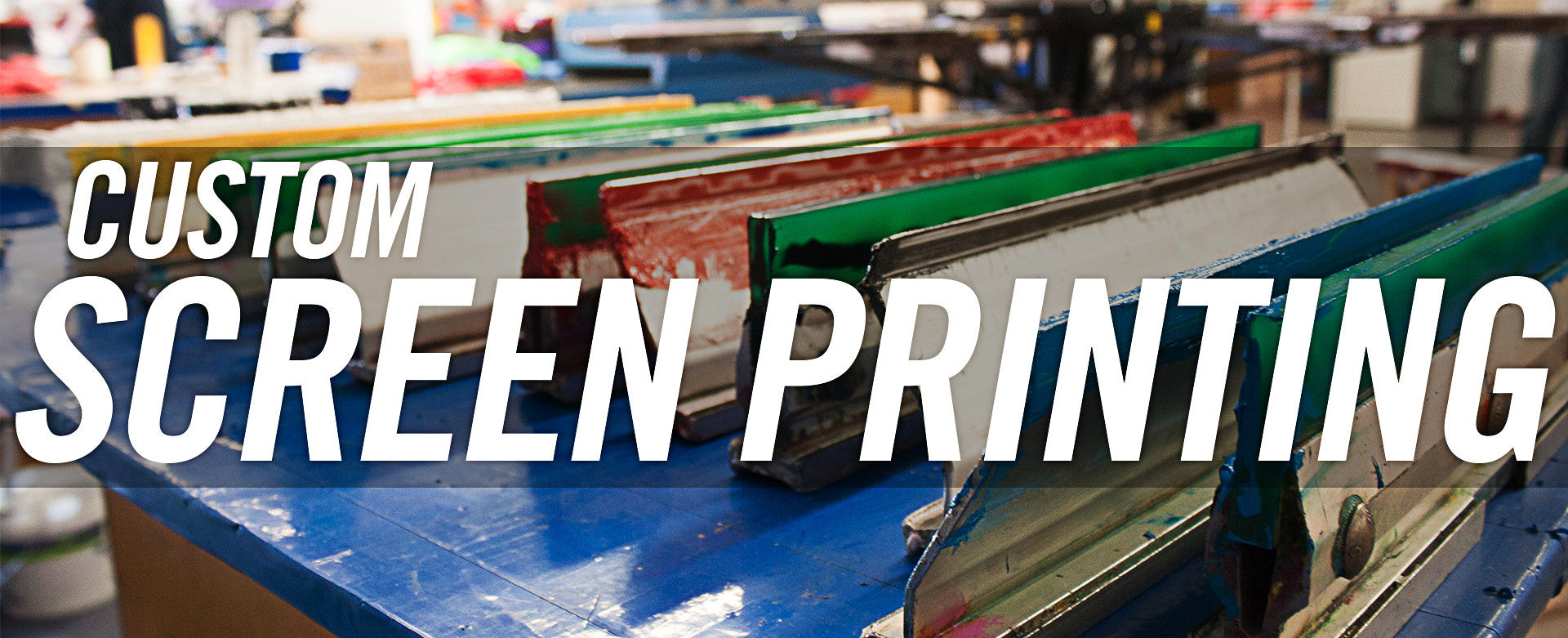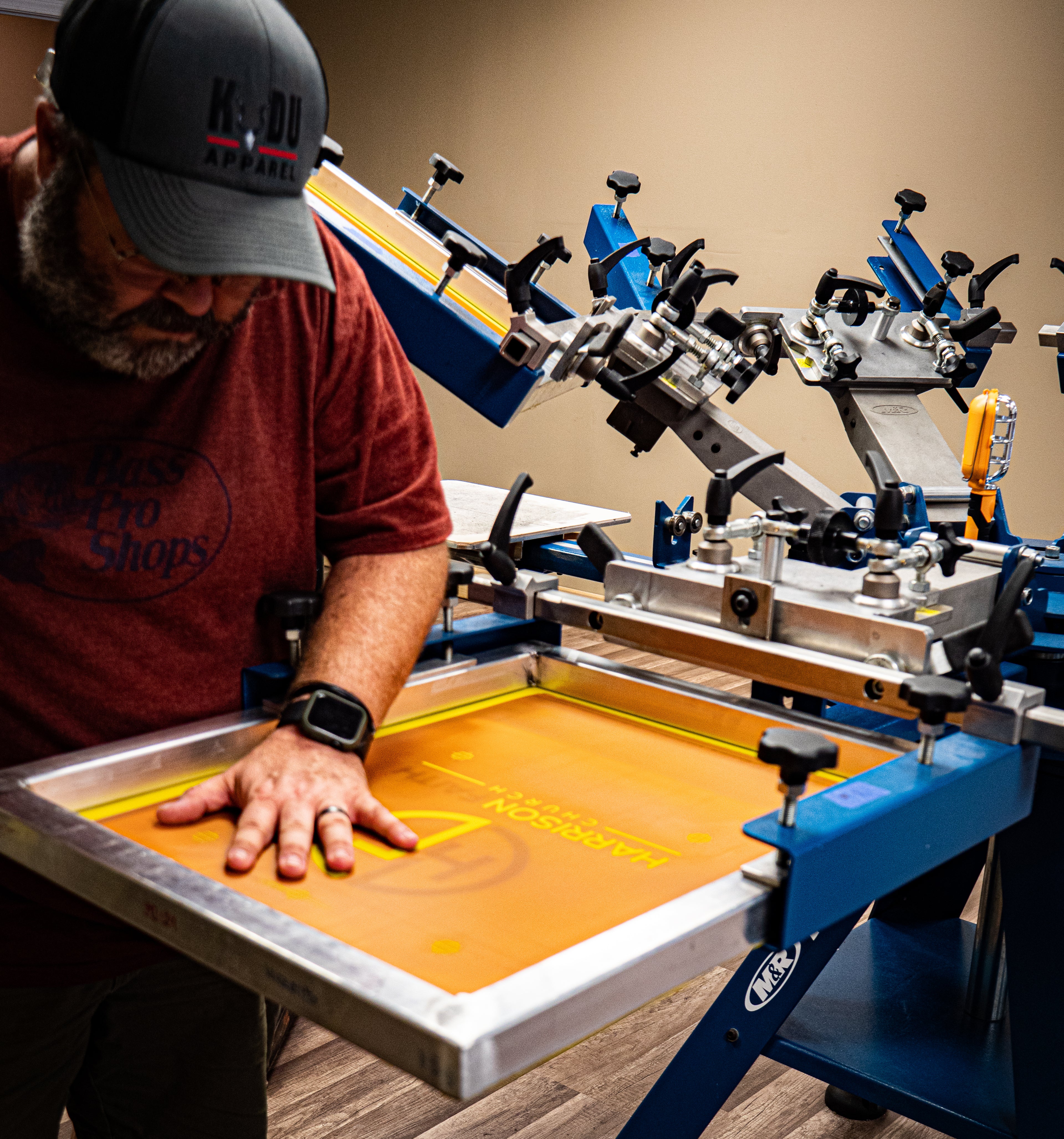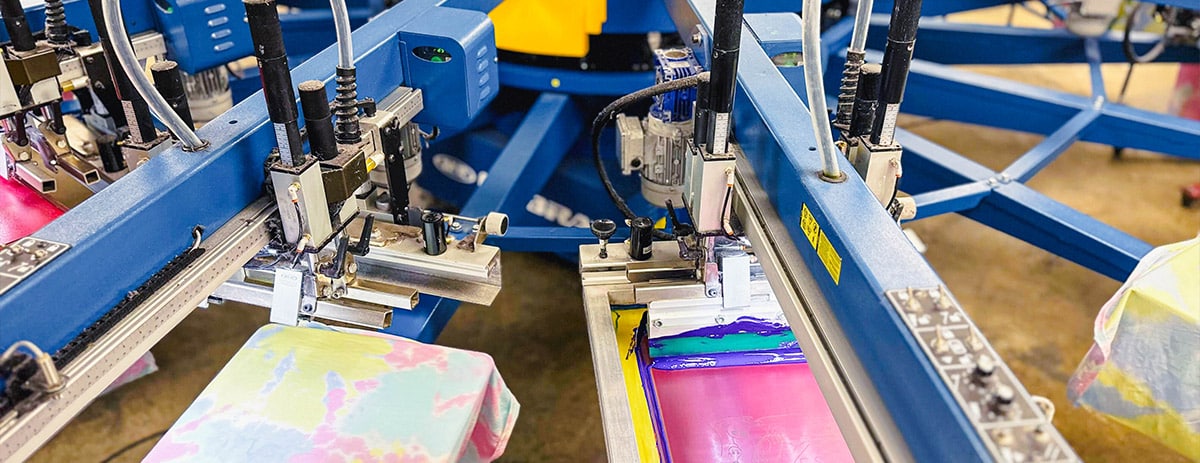Professional Screen Printing Kit for Custom Apparel
Professional Screen Printing Kit for Custom Apparel
Blog Article
Display Printing Uncovered: Everything You Need to Understand About T-Shirt and Garment Printing Methods
If you have actually ever before asked yourself just how those dynamic designs wind up on your preferred tee shirts, you're in the ideal place. Display printing is a remarkable method that integrates art with method, supplying endless possibilities for imagination. Comprehending the basics, from devices to ink selections, can substantially influence your outcomes. All set to discover the vital aspects that make screen printing an art form? Let's reveal the information that can raise your tasks.
The Fundamentals of Screen Printing: Just How It Functions
When you plunge into display printing, you'll find it's both an art and a science. At its core, display printing includes creating a pattern, or screen, that allows ink to pass through just in details areas.
Setting the screen over the material, after that make use of a squeegee to push ink via the screen onto the garment. Each step is essential, and grasping them will raise your display printing abilities, changing basic garments into distinct, meaningful items.
Kinds Of Display Printing Methods
As soon as you understand the basics of screen printing, it's time to check out the different techniques that can boost your designs. One popular method is standard screen printing, where ink is pushed through a stenciled screen. This technique is fantastic for vibrant, vivid colors. Then there's water-based ink printing, which uses a softer feeling and is environmentally friendly, however it needs a various approach to curing.
An additional choice is plastisol printing, known for its toughness and brilliant colors, making it a favored for numerous brands. Experiment with halftone printing to create gradient results and complex styles.
Vital Equipment for Display Printing
To attain spectacular outcomes in screen printing, having the ideal equipment is essential. You'll need a strong screen printing framework, which holds the mesh that moves your layout onto the garment. Next off, spend in premium mops; these are important for applying ink evenly across the display.
Selecting the Right Inks and Materials
When choosing inks and products for display printing, you require to take into consideration the kind of ink that works finest for your job. Think of material compatibility to assure your styles look last and wonderful lengthy. Discover environment-friendly ink choices to make your printing process much more sustainable.
Types of Display Inks
Picking the ideal display ink is necessary for accomplishing dynamic, durable prints that fulfill your task's requirements. There are several kinds of display inks to take a look at. Plastisol ink is prominent for its flexibility and convenience of use, supplying outstanding shade opacity on dark materials. Water-based ink, on the other hand, supplies a softer feeling and is environment-friendly, making it perfect for those looking to decrease their ecological effect. Release inks eliminate color from the material, leading to a soft, classic look yet call for certain handling. Lastly, specialized inks, such as metallic or glow-in-the-dark, can add unique impacts to your layouts. Evaluate your job needs and pick the ink that lines up ideal with your desired result.

Textile Compatibility Considerations
Understanding material compatibility is vital for attaining premium display prints, specifically because various materials respond distinctly to various inks. When selecting inks, consider the textile kind-- cotton, polyester, or blends. For cotton, water-based inks function well, supplying soft qualities and breathability. Polyester, on the other hand, often calls for plastisol inks for better adhesion and dynamic shades. You could need to make use of a combination of both types if you're publishing on blends. Constantly examine your inks on sample textile to assure they adhere properly and maintain color honesty. Additionally, bear in mind that textile weight and structure can affect the last outcome, so picking the appropriate ink and product combo is essential for your task's success.
Eco-Friendly Ink Options
Environmentally friendly inks are coming to be a popular choice for display printers that intend to decrease their ecological effect while preserving high quality. When choosing inks, consider water-based inks, which are much less dangerous and less complicated to cleanse up contrasted to conventional solvents. These inks bond well with materials, delivering vibrant results without hazardous chemicals. You may also check out eco-solvent inks that use fewer volatile organic compounds (VOCs), making them a more secure choice for both your health and the earth.
Additionally, search for inks made from renewable energies, such as soy or vegetable-based options. By selecting the appropriate inks and materials, you'll not just develop magnificent designs but additionally contribute to an extra sustainable printing process. Make the switch, and your prints will reflect your commitment to the atmosphere!
Preparing Your Style for Screen Printing

Submit Format Needs
To ensure your layout looks sharp and lively on textile, you'll need to pay attention to file style needs for display printing. Start with vector data like AI or EPS, as they can be scaled without shedding quality. If you utilize raster images, choose high-resolution files, such as TIFF or PNG, ideally at 300 DPI. Stay clear of using JPEGs, as they can lose clarity when resized. Make certain your layout has a clear background to stop undesirable white edges on your prints. Lastly, maintain shade modes in mind; CMYK is basic for display printing, so convert your RGB designs appropriately. By complying with these standards, you'll set your artwork up for an effective print.
Shade Separation Methods
Color splitting up is a vital action in preparing your design for display printing, and mastering it can significantly improve your print quality. You'll require to damage your style into individual colors, as informative post each shade calls for a separate display throughout printing. Start by determining all the colors in your layout and produce layers for each one. You can utilize software like Adobe Photoshop or Illustrator to separate and different colors effectively. Be certain to conserve each layer as a separate file, typically in a format like TIFF or PSD. This accuracy not only assures accurate color depiction but additionally enhances the printing procedure. By focusing on color separation, you'll attain professional and lively cause your screen-printed garments.
Resolution and Dimension
Achieving the finest results in display printing starts with ensuring your design has the best resolution and size. Ideally, your art work ought to be at least 300 DPI (dots per inch) for sharp, clear prints. If you utilize lower resolution, your end product might look unprofessional and pixelated.
When it pertains to size, consider the measurements of your print area. Layout your artwork to match the final print dimension, ideally creating it in the real measurements you'll be publishing. In this manner, you'll prevent any type of unexpected scaling issues.
Always examine your style in both vector and raster layouts. Vector graphics can be scaled without losing top quality, making them optimal for screen printing. Preparing correctly will guarantee your design looks remarkable on every garment!
Step-by-Step Screen Printing Refine
Screen printing is a vibrant process that permits you to develop dynamic designs on numerous surfaces. To obtain begun, you'll need a display, emulsion, and your chosen ink.
Pour ink onto the display and make use of a squeegee to push the ink with the pattern onto the material. Lift the display meticulously and allow the print dry. You've efficiently display printed your layout.
Tips for Effective Display Printing Projects
While you're diving into your screen printing tasks, keep in mind that preparation is crucial to success. Begin by gathering all your products-- inks, squeegees, displays, and garments. A tidy workspace aids avoid unwanted errors, so neat up prior to you begin.
Following, verify your artwork is high-resolution and correctly sized for your garment. Test your screen for appropriate exposure and clean it thoroughly to stay clear of spots. When mixing your inks, adhere to the maker's guidelines to achieve the ideal consistency.
Throughout printing, apply also pressure with your squeegee for regular outcomes. Do not hurry; take your time to verify each print fulfills your requirements. After printing, allow your garments dry totally before taking care of or packaging them.
Finally, constantly maintain a sample of your job for future reference. This means, you can assess your development and boost your techniques gradually. Pleased printing!

Frequently Asked Questions
How Long Does It Require To Establish a Display Printing Work?
Establishing up a display printing task typically takes about thirty minutes to an hour. You'll prepare the screens, mix inks, and adjust the press. The moment differs based upon intricacy and experience, so stay organized!
Can I Publish on Various Material Keys In Making Use Of the Same Strategy?
Yes, you can publish on different fabric types using the very same method, but you'll need to adjust your inks and settings. Some materials absorb ink differently, so experimenting assurances the most effective outcomes for every material.
What Prevail Blunders to Stay Clear Of in Screen Printing?
When display printing, prevent common blunders like making use of the wrong ink, overlooking proper direct exposure times, or avoiding pre-press checks. Always test your configuration and preserve clean screens to guarantee top quality results each time.
Just How Can I Appropriately Clean and Preserve My Display Printing Tools?
To effectively tidy and maintain your display printing devices, you should routinely his explanation clean displays with suitable solvents, examine squeegees for wear, and assure all tools are kept dry and dust-free. Consistency stops costly repair services and boosts efficiency.
Is Screen Printing Eco-friendly Compared to Various Other Approaches?
Screen printing can be a lot more environmentally pleasant than other approaches, especially if you utilize eco-conscious products and water-based inks. By picking sustainable materials and methods, you lower waste and minimize your effect on the world.
Display Printing Uncovered: Everything You Need to Know Regarding Tee and Garment Printing Techniques
At its core, screen printing includes producing a stencil, or display, that permits ink to pass through only in particular areas. Setting the display over the textile, after that use a squeegee to push ink through the screen onto the garment. One prominent approach is typical screen printing, where ink is pressed find this via a stenciled display.When choosing inks and materials for screen printing, you need to take into account the type of ink that works finest for your job.
Report this page